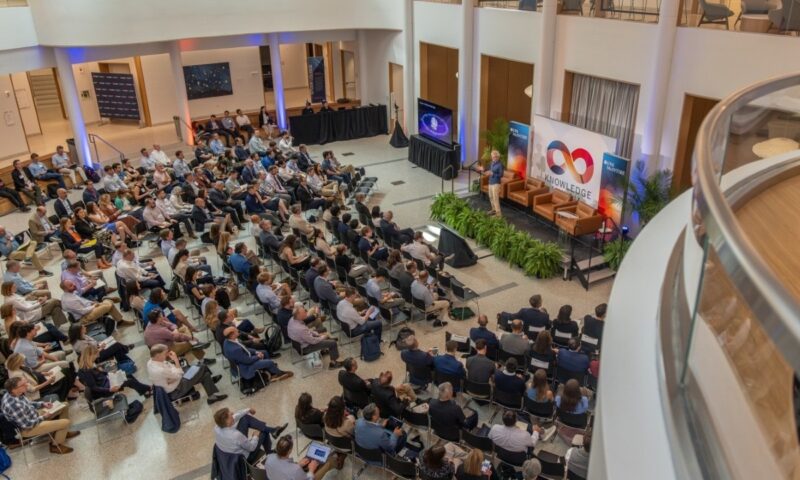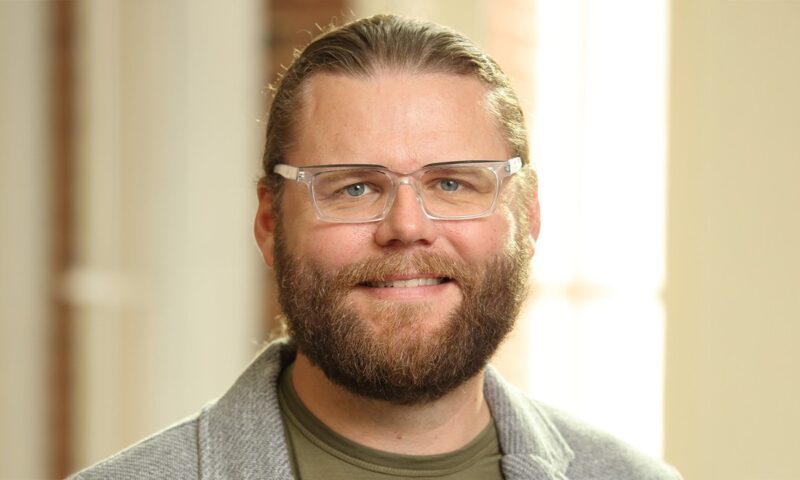A new lawsuit was filed in California against your business. The suit charges that your company’s diesel engine cars have been spewing nitrogen oxide emissions at a rate of 40 times higher than the federal limit—and those emissions are potentially responsible for the failing health of a nine-year-old. A reporter wants a comment from your CEO. Now.
This setup is just the first in a series of sudden escalations that McIntire third-year students in the Integrated Core Experience (ICE)’s eight blocks grapple with during ICE’s annual crisis communication simulation.
For the past three years in February, students are tested to think on their feet and work quickly with their groups to mitigate largely fictional—but true-to-life—PR disasters during a high-pressure double-session. The simulation exercise, developed by Professors Lynn Hamilton, Marcia Pentz, Robert Patterson, and Kerrie Carfagno, presents crises that are bound in factual possibilities and made all the more plausible by their similarities to actual company debacles.
It’s bad news, and it only gets worse. This fresh dilemma is quickly followed by reports of exhaust testing on monkeys and trending negative hashtags to boot. The third and final escalation? More press inquiries about other potential health-related lawsuits, reparations, fines, dealerships calling corporate, a dropping stock price, and a steady stream of trending ultra-critical memes.
Now in their second semester of ICE, McIntire’s intense and demanding third-year curriculum, these McIntire students have benefited from the unmatched real-world experience of presenting to executives at the conclusion of the previous semester and have already developed an understanding for the nuanced analytic, strategic, and behavioral aspects that affect corporate culture. Luckily, the Commerce School’s hallmark fall-semester project tends to eschew hands-on practice with handling the absolute thorniest, worst-case business scenarios.
The ICE crisis simulation comes close—or rather, as close as anyone could hope to get without facing any real-world consequences.
Functioning as internal crisis management consultant teams, each group is pressed to respond to their company’s CEO (a role played by each block’s professor), proffering talking points for addressing the onslaught of problems (which are different block to block and changed year to year to keep the exercise properly unpredictable). Student teams are tasked with crafting bulletproof replies offering immediate to longer-term solutions for an anxious and demanding executive who needs to address customers, dealerships, analysts, the media, and policy makers.
Though the students are accustomed to writing thoughtfully and with attention to detail, the exercise is one of the rare times in ICE in which they must stretch themselves to address extremely time-sensitive demands, thereby making the process all the more challenging and realistic. Adding to the duress of attempting to publicly answer each new escalation within 15-minute windows, students are responsible for delegating tasks and weighing the manner of their replies across various channels, including social media. These public-facing answers include a Twitter response plan from a corporate, dealership, or employee account (although not actually posted online).
Huddled in rooms throughout Rouss & Robertson Halls, the students are isolated from their peers, and rely on email to communicate with their “CEO.” So what’s the verdict? Are students more qualified for dealing with PR drama after the heated and demanding simulation—or is this all too much tension for a Wednesday morning?
Making Sense of It All
Student reactions during a post-simulation debriefing were overwhelmingly positive, albeit tempered, with a clear feeling of exasperation from the participants.
One student explained that given the time crunch, it was problematic for the group to literally get on the same page. “Just the pressure of trying to absorb the details while everyone is talking at the same time was stressful. We’re all reading different paragraphs. It was like, ‘Wait a minute! I’m still on the second sentence.’”
Carfagno, who served as CEO to Block 5, understood the dilemma. “Absolutely. There’s so much coming at you at once, and that is a big challenge with a crisis,” she said. “We talk about ‘sense making.’ You’re all challenged to make sense of what was happening and to do it in a very tight timeframe. That’s part of the problem. You’ve got a crisis. You’ve got to figure it out with all of the information coming in. What’s valuable?”
Another student related the difficulty of time management: “Our group was concerned about the second escalation, since we had only about nine or ten minutes to answer.”
“When I wrote, ‘Give me three talking points in 10 minutes,’ you could have actually written back, saying, ‘It’s going to take us 15,’” Carfagno told the students. “Depending on the CEO’s personality, they might agree, or they might freak out. You’ve got to know the CEO’s disposition to know if you can ask, ‘Can we give this to you in 15? It’ll be worth it.’”
The simulation also provided an opportunity to explore organizational dynamics. In addition to trying to convey that their CEO was on top of the problem, students had to swiftly grasp their group’s limitations while navigating their relationship with the CEO.
Another student detailed his group’s thought process in crafting a response to the financial press: “We took that news about the stock price and tried to transform the thinking about it into a long-term approach by saying, ‘Our stock price might take a hit, but we don’t want you to think of us as a short-term investment.’”
Carfagno seized the opportunity to remind students what makes overseeing a crisis situation so vitally important to the well-being of the firm. “At some point, you’re going to have to recognize that this is affecting the company’s value,” she said. “Let’s say that you all own stock in this company and you find out that your company could potentially be sued over health issues. What do you think about the value of your stock? If you’re an analyst, what are you thinking? You might watch the dip and then buy in, because long term, they’re going to be okay? Or are you thinking, ‘I want out’?”
By the show of hands, most students were ready to sell.
“Remember, when we talk about crisis communication, the risk for a company isn’t always what the company is doing, but what their providers, their vendors, their suppliers, even their customers might be doing,” Carfagno said. “All of those groups can be a risk to the company without the company being aware of it.”
Owning It
Carfagno then read some of the talking points created by the group.
One response for a California dealership said, “Helping a local family and their son is a top priority for our dealership. We’re currently working to provide the most effective solution for the family while trying to support other members of our community.”
Students reacted positively, finding that the response gave reassurance that the condition of the asthmatic child was being taken seriously and spurring the company to action.
“You’re going to get some flak for not having done anything already, but you’re going to get that anyway,” Carfagno said. “So, at some point you’re acknowledging it. It’s balanced—it’s non-emotive, non-defensive, just dealing with the problem.”
At that point, another student commented that admitting culpability became the most troublesome challenge her group faced. “Our biggest struggle was finding the tipping point—when could we say, ‘We’re looking into this,’ and when did we have to say, ‘Okay, it happened, and here’s what we’re doing for that,’” she said. “Allegations could be true or false, and they might be small enough that no one really cares. You have to determine the point where you have to step in and say, ‘Now is the time. We’re owning it.’”
In a lighthearted exchange, one student roasted his fellow group member over his questionable word choice in their talking points for the company’s emissions testing facility: “We apologize and terminated testing on monkeys. We will corrective actions to rectify the situation.” The entire class agreed that “terminate” was a poor word choice.
In reviewing each group’s efforts, tactical, effective responses often came down to fluid group dynamics. One participant’s retelling of his group’s process was met with many nods around the room.
“Whenever we had a tight time window—and someone had an initial reaction—they would say it out loud, and then there would be a quick approval or refusal,” he said. “Someone would start typing, and then someone else would go through it, reading to double-check it.”
“Sounds like your group’s ready for consulting work,” Carfagno said. “Really. Because you’ve got to figure out how to become efficient in this kind of situation.”
To Be Continued
At the session’s conclusion, Carfagno asked if she “should torture students with it” next year.
Though all of the students said yes, one insisted that they should have had some of the information sent to them the night before.
Carfagno reminded the class that the stressful nature of the exercise is by design. “You’re trying to digest this at the same pace as the public—that’s very common. When these things happen, it’s a huge challenge. It was mean, but it was mean on purpose,” she said with a smile.



